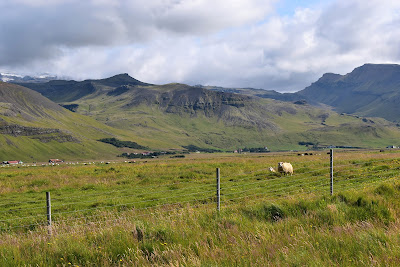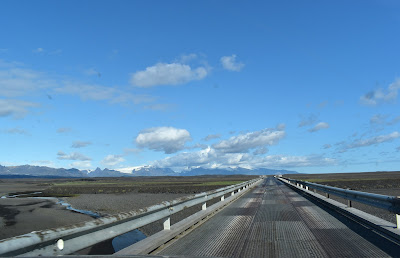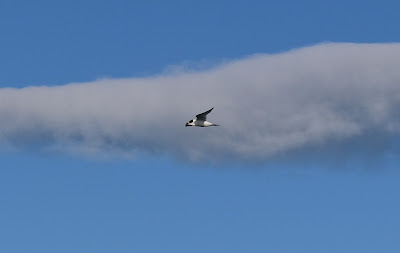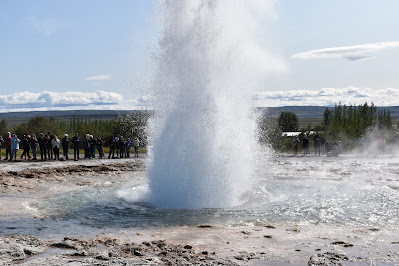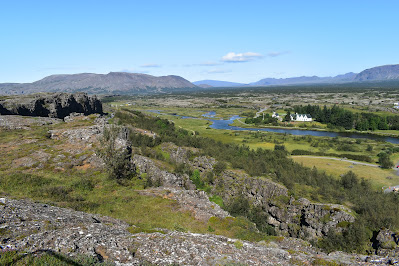Driving east along Iceland's southern coast, August 2019, we were greeted with one stunning landscape after another. To the left there are dramatic, jagged cliffs looming over soft, green fields and dairy farms with bright red roofs, backed by snowy glaciers. To the right, flat flood plains opening out to the ocean as far as the eye can see.
It was along here that we picked up two hitchhikers, nice young women from Finland off on an adventure who were grateful for a lift to Vik. Before dropping them off in the little town, we all took a detour to Dyrhólaey, a little peninsula overlooking the spikey rock formations and black sands of the Reynisfjara, known as one of the most beautiful and dangerous beaches in the world.
After a picnic on the non-dangerous part of the beach and a restock at the supermarket, we continued east through a miles of moss-covered lava fields towards Vatnajökull, the largest glacier on the island, which we would explore more extensively the following day. The first view of the massive ice cap was thrilling, and we pulled over by some grazing sheep to take it in before continuing along the coastal road to our main destination.
We were headed, as most tourists were, to Jökulsárlón, a glacial lagoon that started forming in the 1930s as the ice cap started to recede. As the ice recedes, parts of the glacier break off and float over the lake to the open ocean, where the fresh and salt water come together. The ice chunks that break off are often thousands of years old and streaked with soot that tell a history of volcanic eruptions over the centuries. This ancient ice comes in a variety of blues and fantastical shapes that are forever changing, floating, flipping as they slowly make their way towards open water.
This is the kind of picture that one usually sees in the ads, showing a stunning, frozen, almost alien landscape:

It is a true and legitimate picture, but also not the whole picture.
What struck me when we arrived was the contrast between the zoomed in picturesque landscape and its barren, rocky, person-covered frame. It was the height of summer, in beautiful weather, and slowly but surely, everything was melting.
We'd signed up for a boat tour in advance in order to see these fantastical sculptures up close, and this way Amir could also appreciate someone driving him around for a change. The guides told us the history of the lagoon and plucked a chunk of ancient ice out of the water for us to taste.
The Arctic terns were zooming about and resting on the ice sculptures.
As the evening sun got lower on the horizon, the tourists dispersed and the ice began to glow in beautiful, bright blue hues. It was so, so magical.
I wanted to stay there all night (or at least until the sun set), but it was already late and we still had to drive a further hour east to our beds. The mist on the glaciers glowed golden as we drove past.


